Handy Hint: Jan 10, 2010
Colored Tape Marks Distance

During the winter months, my employees are so bundled up that they have a hard time turning around inside the skid loader to see behind them. This led to gates and overhead doors being hit. The colored duct tape gives the employees a forward visual reference of when to stop before they hit the gate and door. All employees must pull the manure back to the orange tape before turning around to push it forwards. Duct tape is cheaper than overhead doors and gates.
Ethan Lott, Michigan

January 25, 2010 Handy Hint
Text cows and heifers in heat

We issued cell phones to all our employees. As part of the agreement with our employees for using the farm-issued cell phones, we want employees to record four-digit ear tag numbers of cows and heifers in heat. If an employee punches the four-digit number like you are dialing out and then pushes send, that number will be saved with the time it was recorded in the sent column. This system works exceptionally well, and our pregnancy rates have increased since we made the move.
Other dairies could also use this idea and simply use the text message system, as well. I'm sure it would work equally as well as our saving numbers as a dialed number.
Brad Cates, New York

Feb 10 Handy Hint:
PVC Pipe Keeps IV in Place
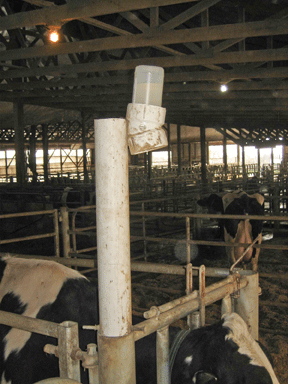
Sometimes to start an IV on a standing cow in a headlock can be a two-person job (one person to hold the bottle, the other to insert the line into the needle). I made up this PVC insert which fits nicely into our posts. To prevent the IV bottle from sliding the whole way down the post, I fastened a carriage bolt through the pipe, while the angled connector holds the 500-ml bottle without slipping through.
Justin Risser, Pennsylvania

Feb 25, 2010 Handy Hint
Best milk replacer mixer
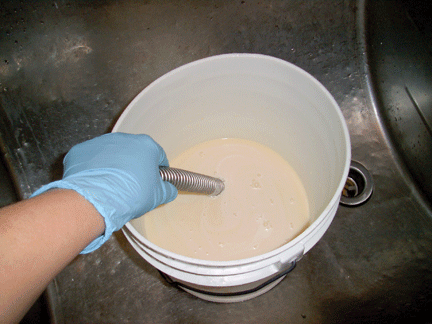
I use a 12-inch milk filter spring to mix batches of milk replacer, and I've found the spring is the best mixer ever; it's stainless steel so it's easy to clean; plus there are no crevices for milk replacer to accumulate, as with ordinary whisks. The spring has a little give which makes mixing easier on the wrist, and the spring does a great job mixing. The spring is long enough to mix enough replacer for several calves without touching the milk. For bigger batches of milk replacer, I use a 24-inch spring and a 5-gallon pail.
Sadie Frericks, Minnesota

Handy Hint: March 10, 2010
Place Water Lines Within Tile Lines
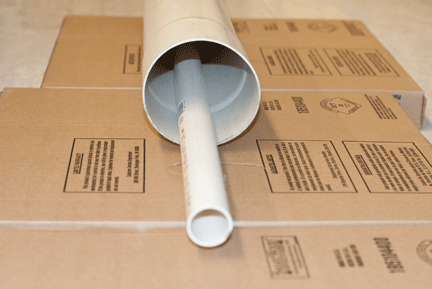
Whenever we replaced or put in a new water line, we ran the plastic water pipe through a 4-inch drainage tile. Doing so allows us to replace a water line very easily without having to do any digging. It also makes it much easier to detect leaks in the water line, since the water will run out of the tile into our dry well. Make sure the dry well is drained because groundwater will also make its way into the 4-inch tiles.
Where the water line comes up into a building, write on the wall the length of the pipe in case it needs to be replaced someday. When replacing a water line, connect the new line to the old, and have someone pull out the old while someone else pushes in the new line. When trying to push a new line through an empty 4-inch tile, tape a golf ball to the end of the water line so it won't catch on the corrugations of the tile.
Bill Los, Ontario, Canada

Handy Hints March 25, 2010 Top Hint:
Durable, rust-free stall scraper
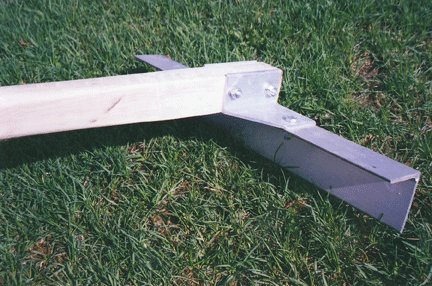
After having yet another "quality" free stall sand scraper rust, fatigue, and come apart, I built this lightweight, yet extremely strong, one. The blade and brackets were cut from an old piece of 2 x 3-inch aluminum angle and bolted to a hand-shaped 1-1/2 x 2-inch hardwood handle with 5/16-inch hardware.
An old hand plane was used to taper the handle to a nice comfortable oval shape (not shown), and it is longer than those on commercially available units in order to reach the front of the stall without stepping into it with dirty boots.
This is a great tool, in use for over a year, and works perfectly. It also gets used as an impromptu pry bar for breaking free frozen gates and as a hammer for pounding in raised nails.
Caleb Boge, Michigan

April 10, 2010 Handy Hint
Sliding doors offer light, ventilation

Instead of installing several large windows, the Kremers at Donkelman farms in Tillsonburg, Ontario, installed large sliding glass doors along the perimeter of their rotary parlor. The doors make for easy ventilation and add plenty of light to the parlor.

Handy Hint April 25, 2010
Easy and clean way to move newborn calves
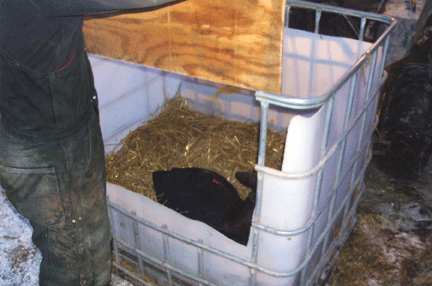
I wanted an easy and clean way to move newborn calves to our hutch area which is on the other side of the farm. I cut off the top of a 250-gallon portable water tank and cut off one of the sides three-quarters down to the bottom. I used a plywood board for a door so it is an easy way to get the calf in and out. I use a skid-steer to move it.
Lucas Herrmann, Wisconsin

May 10 Handy Hint:
Train wheels pack bunker
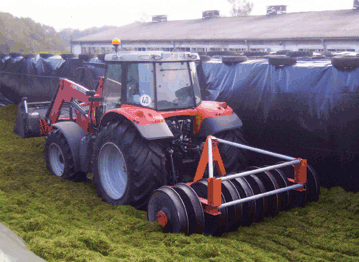
We made a silage packer from 10 old iron train wheels. It works very well when packing our corn silage and haylage bunkers. The total weight of the packer is about 9,000 pounds. It brings more packing weight, more stability, and it packs about 10 feet of width at a time.
Joris Burgmans, Germany

May 25, 2010 Handy Hint:
Whiteboard tracks ketosis testing
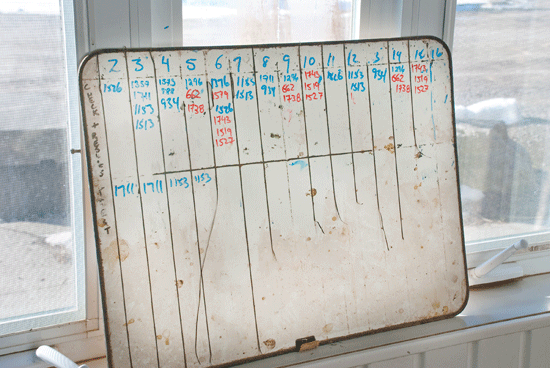
At Summitholme Holsteins in Lynden, Ontario, a simple dry erase board is used to track ketosis testing for fresh cows. The whiteboard is labeled with the days of the month. When cows calve, their identification number is placed in three columns representing the three times they are checked with ketosis strips after calving.
With this easy format, employees can know which cows need to be tested daily without the use of a computer.

June Handy Hint:
Durable esophageal feeder
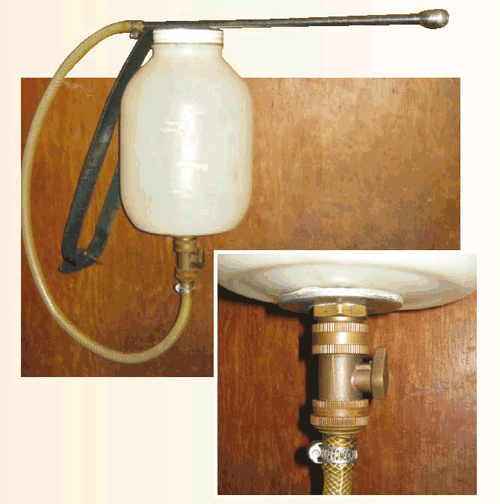
We made this esophageal feeder from a one-gallon mayonnaise plastic jar. There is a hook on the lid that holds a leather neck strap (freeing your hands). On the jar's screw-on lid, we drilled a very small hole as a vent. In the bottom, we installed brass pipe fittings (don't rust) with a regular brass hose shutoff valve. The bottle is attached to a 3/8 nylon braided hose which is clamped to the stainless steel esophageal feeder tube from our old esophageal feeder.
Stephen Hewitt, Canada

July 2010 Handy Hint:
When to breed heifers

At the Hoard's Farm, we created this quick detection method when a heifer is in the chute to determine if she is eligible to breed. A line was drawn on a 2 x 4 at the desired breeding height; for our farm the height is 42 inches. Heifers that are observed in estrus at heights above this line are bred, while heifers falling under this mark are not.

August 10, 2010 Handy Hint
Brush-moving attachment
For trimming and hauling brush, this device, which fits on my skid steer, is by far the best labor- saving item I have ever constructed. It could be almost any size, but you will need forks for the skid steer loader.
Loading limbs is easy and when you get to the pile you simply remove the front two posts, lift the brush and deposit it on the top of the pile. A chain from the forks to the device keeps the brush hauler from dropping into the pile (it is very important); 4 x 4s and square tubing for holding the 4 x 4s plus just about any scrap angle iron are all that are needed to create the attachment.

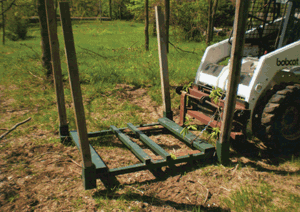
Phil Niemeyer, Wisconsin

August 25, 2010 Handy Hint
Trailer built for easy fresh cow travel

Fresh cows are ferried back to the milking string with this low-rider trailer. Designed by Lorin Berge, Valders, Wis., the tractor-drawn unit is built with horizontal bars that eliminate any sense of stepping into a dark space.
The low-slung trailer tips down so the bovines simply walk on. "It's important that, when cows have just calved or have mobility issues, we're not making them take a big step up," Loren notes.
Carole Curtis, Wisconsin

Handy Hint: September 10, 2010
Recalibrated seeder saves time
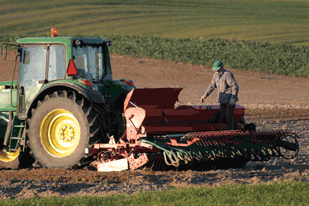
We decided to recalibrate our seeder so we wouldn't have to pour excess alfalfa seed into it. Additionally, we could ensure that we were getting proper seeding rates which ultimately saves us on seed costs.
We began recalibrating the seeder by putting the suggested pounds into the hopper, and then we went and planted the specific acreage, stopping from time to time to check how much seed was left in the hopper. By doing so, we could determine how far the calibration of our seeder was off this spring.
Gary Waldner, Canada

Handy Hint: October 10, 2010
Colored buckets identify calf sex
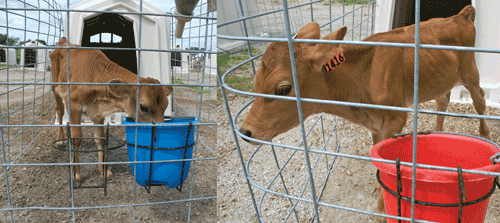
We have finally found an easy way to identify the sex of our calves when they are in hutches. Heifer calves are given a pink water bucket, while blue is used for bull calves. This system has worked very well for our employees and us.
Julian Miller, Kentucky

Handy Hint: October 25, 2010
Neck rails that give
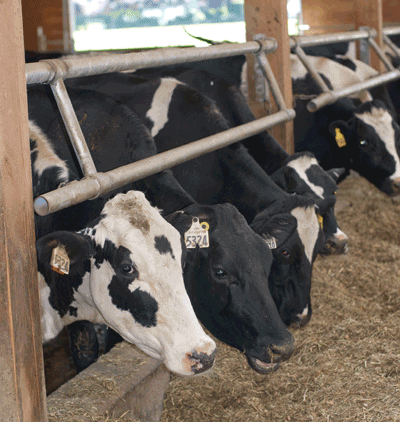
A local builder created a neck rail that has some extra give to it. As shown in the photo, the rail is mounted above the feed aisle and equipped with a second pipe that can move forward if a cow is pushed from behind or lunges for extra feed. This reduces the pressure on the neck region but keeps cows in their place, reports Bernie Vander Meulen of Corner's Pride Farm in Rosedale, British Columbia, Canada.

Handy Hint: November 2010
Cow Shower

Clay McQuiddy, Mountain Grove, Mo., rigged an inexpensive cow shower for his pastures. He taped a 3/4-inch plastic polypipe to a 3/16-inch cable that loops over the metal A-frames to suspend the pipe. The nozzles were purchased out of a farm catalog. There are moveable stakes in the pastures that the A-frames attach to. To supply water, extension hoses run from the well system and hook into the polypipes. Clay moves the shower to a new location daily.

Handy Hint: December 2010
Skid moves calves to heifer operation
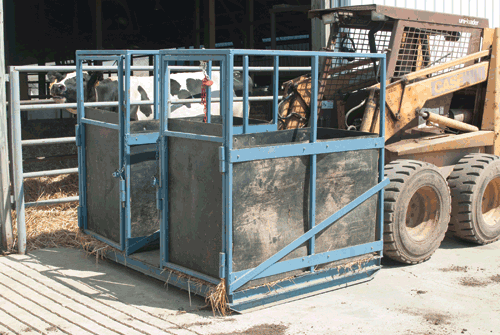
To help move calves across the road to their heifer operation, the Steve and Carl Ayers Family of Perryville, Ohio, designed this small calf carrier which attaches to a skid loader. It is on skids so the loader can easily pick it up. The lower area of the calf carrier along with the floor is made of rubber belting. The rubber belting is easy to clean, reports Jesse Ayers.
An earlier version was one solid container but when adding canvas to the top during winter months the skid steer driver could not see around it. So they redesigned the carrier and added stairs and split it in the middle which improves vision and makes entry and exit into the skid steer cab easier, as well.
The Ayers Family reports that they should have added a foot to each side of the calf carrier to haul more calves, but otherwise it works extremely well. The current model comfortably holds four calves.

If you have a handy way to handle something on your farm, submit it as one of our famed Handy Hints (and make some money while doing it.) You can email it to an editor -editors@hoards.com- and your hint could be printed and shared with tens of thousands of producers worldwide. Handy Hints that are published receive $30 and if you include a clear, reproducible photo, that earns you an additional $20. (Hints and photos can also be mailed to the Hoard's Dairyman office at PO BOX 801, Fort Atkinson, Wis., 53538)